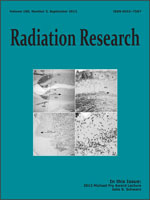18F-fluoro-deoxyglucose-positron emission tomography (FDG-PET) is a molecular imaging technique that can be used to monitor treatment-related changes in tumor glucose uptake. In cervical cancer, the FDG-PET response is predictive of survival outcome after chemoradiation. In an effort to understand the signaling pathways that regulate the FDG-PET response in cervical cancer, gene expression profiling was performed. Gene set enrichment analysis (GSEA) identified alterations in expression of genes from the PI3K/AKT signaling pathway in tumors with incomplete FDG-PET response after chemoradiation. Pretreatment phosphorylation and activation of AKT is common in cervical cancer, and patients whose tumors have increased pAKT expression prior to treatment have inferior survival outcomes after standard chemoradiation. Recently, activating mutations in the PIK3CA gene have been identified that are associated with poor prognosis after chemoradiation in cervical cancer. These results suggest that targeted inhibition of PI3K/AKT may improve response to chemoradiation in cervical cancer.
How to translate text using browser tools
16 September 2013
Translating Imaging Results into Tumor Biology: FDG-PET and The Response to Chemoradiation in Human Cervical Carcinoma
Julie K. Schwarz
ACCESS THE FULL ARTICLE

Radiation Research
Vol. 180 • No. 3
September 2013
Vol. 180 • No. 3
September 2013




